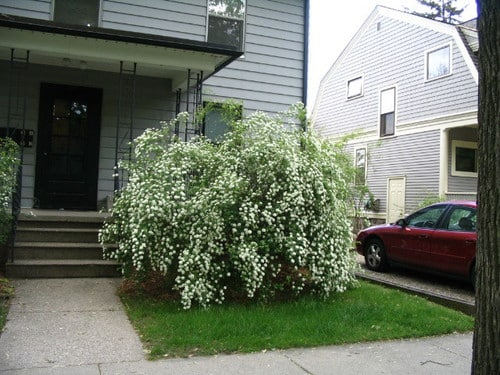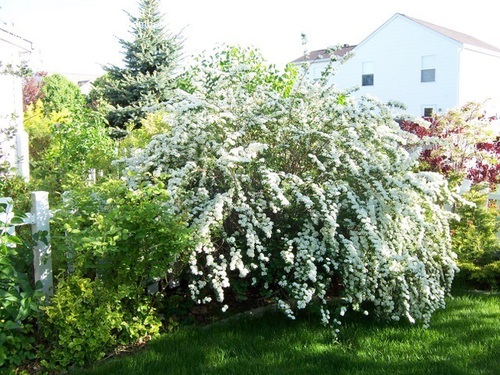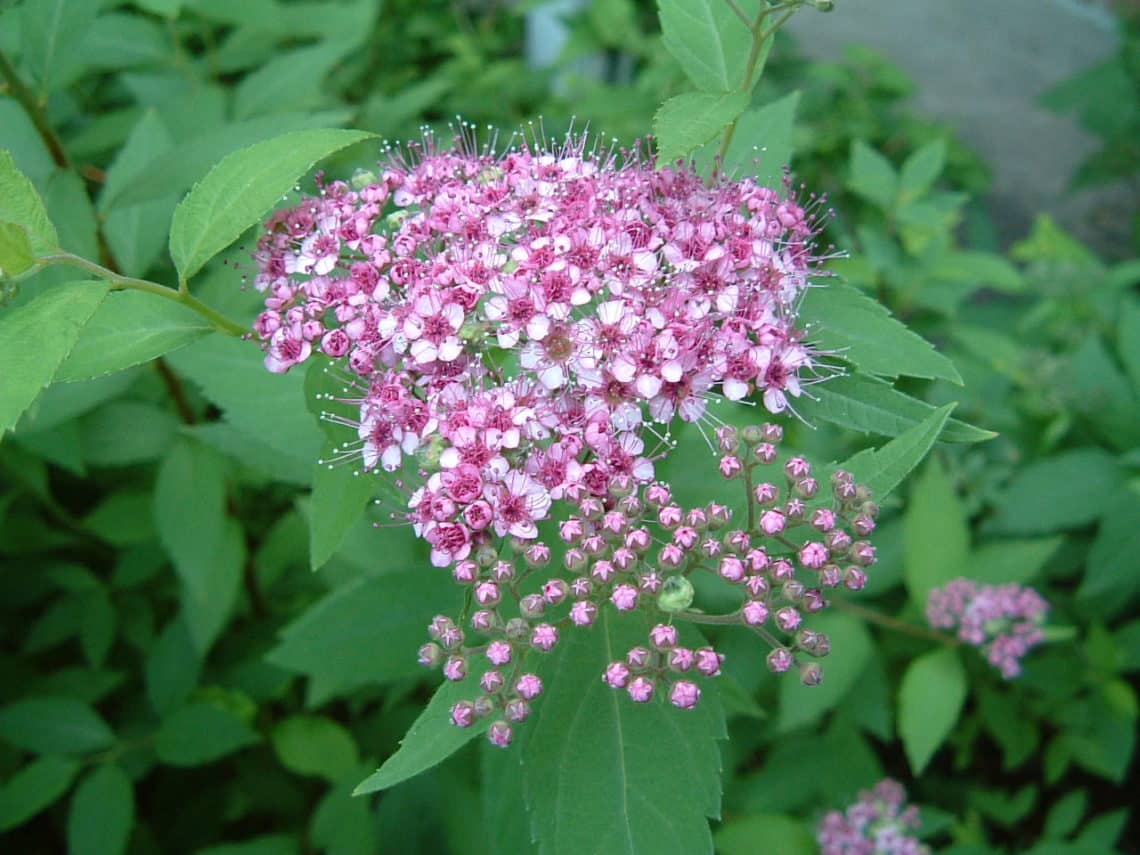Versatile plants that flower in the spring and summer and provide a foliage show in the fall do triple duty in the garden. Spiraea is one of these plants. Also known as bridalwreath, this gorgeous, mounding shrub produces a fountain of cascading delicate white, pink, yellow or red flowers in spring and summer. Come fall, this deciduous shrub’s foliage turns a stunning orange-red.
Besides being eye candy, spiraea attracts a plethora of bees and butterflies to the garden. Given its good looks and appeal, bridalwreath deserves a place of prominence in the garden, such as in the front yard, in the center of a garden bed or as a focal point in the backyard. It grows 2 to 10 feet high and 2 to 10 feet wide, depending on the available growing space and cultural and climate conditions.

(Patricia Byrd/FreeImages.com)
To have luck growing spiraea in your garden, keep the following cultivation tips in mind.
Provide full sun to light shade. Although bridalwreath does best in full sun, it can tolerate some shade. Plant in an area where spiraea will receive a minimum of six hours of sun a day. Morning and early afternoon sun is best with afternoon shade.
Plant in a well-draining location. Bridalwreath requires good drainage to grow well. Test the drainage prior to planting by digging a 6- to 8-inch hole and filling with water. The water should drain within an hour. If it doesn’t, mix in compost and pumice to a depth of 8 to 12 inches and retest drainage.

(Garden Delights Online Plant Nursery)
Water regularly. Although bridalwreath is tolerant of some drought, it does best with regular watering. During the growing season, irrigate established spiraea every two weeks by watering at a slow trickle with a soaker or garden hose, if there is no rainfall. Water young spiraea plants when the top 1 to 2 inches of soil has dried out. Avoid overhead watering, as this can cause fungal problems on the foliage that can lead to premature leaf drop.
Feed periodically. Spiraeas aren’t heavy feeders. They will, however, grow more vigorously if you feed them occasionally. Apply an organic fertilizer designed for flowering plants in early spring, late spring and midsummer.

(Garden Delights Online Plant Nursery)
Prune after flowering. If you wish to reduce the size of spiraea, cut the plant back immediately after flowering. Pruning at any other time of the year may mean that you cut off flower buds. When you prune, do so to shape and avoid removing more than 25 to 30 percent of the plant.
Julie Bawden-Davis is a garden writer and master gardener, who since 1985 has written for publications such as Organic Gardening, Wildflower, Better Homes and Gardens and The Los Angeles Times. She is the author of seven books, including Reader’s Digest Flower Gardening, Fairy Gardening, The Strawberry Story, and Indoor Gardening the Organic Way, and is the founder of HealthyHouseplants.com.

